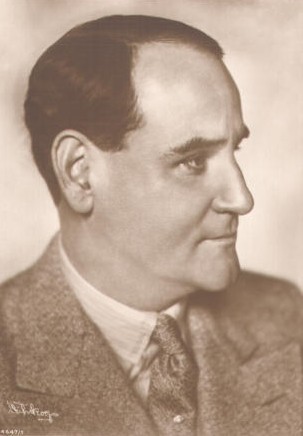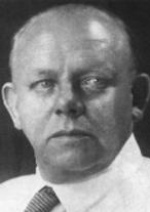Related Research Articles

Franz Planer, A.S.C. was a Czech-American cinematographer.

Willy Fritsch was a German theater and film actor, a popular leading man and character actor from the silent-film era to the early 1960s.

Lee Kohlmar was a German film actor and director. He appeared in more than 50 films between 1916 and 1941. He also directed nine films between 1916 and 1921. He was born in Forth and died in Hollywood, California, from a heart attack. Fred Kohlmar was his son.

Magdalena Maria Schneider was a German actress and singer. She was the mother of the actress Romy Schneider.

Aribert Wäscher was a German film actor.
Beppo Brem was a German film actor, who was in over 200 film and television productions between 1932 and 1990. He often played stereotypically Bavarian characters, but managed to find respect as a character actor in later years.

Rudolf Antonius Heinrich Platte was a German actor.
Albert Peter Adam Florath was a German stage and film actor.
Ernst Behmer was a prolific German stage and film actor who appeared in more than a hundred films during the silent and early sound eras.
Jean Sinoël, often known simply as Sinoël, was a French actor and singer.
Paul Anton Heinrich Rehkopf was a German actor.
Friedl Behn-Grund was a German cinematographer.

Hans Adalbert Schlettow was a German film actor. Schlettow appeared in around a hundred and sixty films during his career, the majority during the silent era. Among his best-known film roles was Hagen von Tronje in Fritz Lang's film classic Die Nibelungen (1924). In 1929 he starred in the British director Anthony Asquith's film A Cottage on Dartmoor.

Otto Hunte was a German production designer, art director and set decorator. Hunte is considered one of the most important artists in the history of early German cinema, mainly for his set designs on the early silent movies of Fritz Lang. A working relationship with fellow designers Karl Vollbrecht and Erich Kettelhut defined his early career. Hunte's architectural designs are found in many of the period's most important films including Dr. Mabuse the Gambler, Die Nibelungen (1924), Metropolis (1927) and Der blaue Engel. Hunte subsequently worked as one of the leading set designers during the Nazi era. After World War II, he was employed by the East German DEFA studios.
Willy Schiller was a German art director. In the later part of his career he worked for DEFA, the East German state-controlled film studio.
Basil Mason was a British screenwriter. He worked on more than thirty films during his career.
Georg Henrich was a German stage and film actor.
Fritz Rotter (1900–1984) was an Austrian writer and composer. Along with his brother Alfred he owned several Berlin theatres during the Weimar Republic but, due to his Jewish background, was forced to emigrate following the Nazi rise to power in 1933. After emigrating to the US he also used the writing alias M. Rotha.
Joseph Dalman was a German screenwriter.

When the White Lilacs Bloom Again is a 1953 West German drama film directed by Hans Deppe and starring Willy Fritsch, Magda Schneider and Romy Schneider. It was shot at the Tempelhof Studios in West Berlin and on location around Wiesbaden in Hesse. The film's sets were designed by the art directors Alfred Bütow and Ernst Schomer.
References
- ↑ Hull p.84